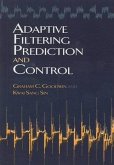The Rotating Modulation Collimator (RMC) belongs to a larger class of radiation imaging systems that rely on either temporal or spatial modulation of incident radiation through collimation to map the location of the incident radiation source. The strengths of these detection systems include their low cost and simplicity. A major drawback is the collection time required for low radiation intensities due especially to the loss of radiation information resulting from collimation. One method of addressing this drawback for the RMC is by applying an adaptive imaging approach. As with most system design theory, there are inherent design tradeoffs for the RMC. By using different RMC configurations for the same radiation environment observation, these tradeoffs can be wagered against one another to improve overall performance. This research explores the effect of RMC configuration changes, specifically by changing the mask design, sampling method, and the angle between the image plane and the RMC centerline.
Hinweis: Dieser Artikel kann nur an eine deutsche Lieferadresse ausgeliefert werden.
Hinweis: Dieser Artikel kann nur an eine deutsche Lieferadresse ausgeliefert werden.








